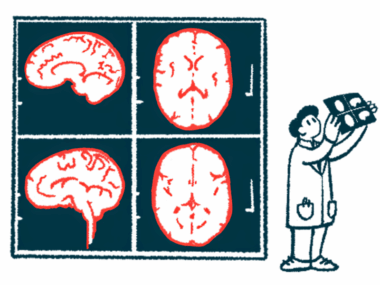DMTs have slowed RRMS disability progression rate: Analysis
Progression events associated with, independent of relapses have declined
Written by |

The rate of disability progression among people with relapsing-remitting multiple sclerosis (RRMS) has slowed over the years due to advances in disease-modifying therapies (DMTs), according to a long-term analysis.
Patients diagnosed in recent decades have experienced fewer progression events associated with relapses, called relapse-associated worsening (RAW), and also fewer events of progression independent of relapses, called progression independent of relapse activity (PIRA).
Because available DMTs mainly work to ease inflammation linked with relapse activity, overall disability worsening in MS has become more closely linked to PIRA events. This “highlights the importance of evaluating new therapies based on their effect on PIRA,” the researchers wrote.
The long-term analysis, “Relapse-Associated and Relapse-Independent Contribution to Overall Expanded Disability Status Scale Progression in Multiple Sclerosis Patients Diagnosed in Different Eras,” was published in the Annals of Neurology.
For people with relapsing forms of MS, the progression of disability is often attributed directly to the effects of relapses. Still, emerging evidence suggests that patients often experience PIRA, in which disability worsens even in the absence of relapses.
Advances in DMTs
Recent advances in DMTs have improved long-term outcomes for people with RRMS, but it’s still unclear whether these gains are due to fewer relapse-associated progression events or a combination of fewer RAW and PIRA events.
To find out, a research team in Italy assessed the long-term disability progression of 1,405 RRMS patients diagnosed from 1980 to 2022, with age at diagnosis ranging from 18 to 60. Progression was defined as an increase in Expanded Disability Status Scale (EDSS) scores, a standard measure of disability in MS, that was sustained for at least six months.
To isolate PIRA, the team deducted all RAW events from the overall EDSS change — defined as an increase in EDSS scores within 90 days of a relapse — and compared the differences across different time periods.
Of the RRMS patients, 231 were diagnosed from 1980 to 1996, when no treatments were available for MS; 577 were diagnosed from 1997 to 2008, when some injectable disease-modifying therapies were already available; and 597 got their diagnosis from 2008 to 2022, when many high-efficacy oral drugs, monoclonal antibodies, and anti-CD20 inhibitors became available.
Results indicated that disability has progressed significantly slower in RRMS patients over the years. This was due to reductions mainly in RAW events, but PIRA rates also decreased significantly over the three periods. The results “suggest that the deceleration of the MS course observed throughout the years was determined not only by fewer RAW events, but also by a reduction in PIRA,” the researchers wrote.
PIRA contribution
The relative contribution of PIRA and RAW to overall progression wasn’t constant over time. The average contribution of PIRA was 78% for patients diagnosed from 1980 to 1996, and 76% for those diagnosed from 1997 to 2008. In comparison, the contribution of PIRA was significantly higher, at 87%, for those diagnosed after 2008.
The researchers conducted a sensitivity analysis based on all signs of inflammatory activity, such as clinical relapses and MRI lesions. Here, the average contribution of PIRA to overall EDSS progression was 71% for patients diagnosed from 1980 to 1996, 76% for those with a diagnosis from 1997 to 2008, and 84% for those diagnosed after 2008.
Despite PIRA’s lower contribution to progression using inflammatory activity measures, “the trajectory components remained substantially unchanged with respect to the main analysis,” the researchers wrote.
“The present analyses revealed a deceleration of both relapse-associated and relapse-independent disability progression throughout the years,” the team wrote. However, they noted, “our results showed a progressive shift toward a mostly relapse-independent progression.”
The researchers said the results show a need for studies of PIRA over time “in terms of the underlying biological mechanisms, and for a solid and standardized framework for evaluating the effect of new therapies on PIRA.”







